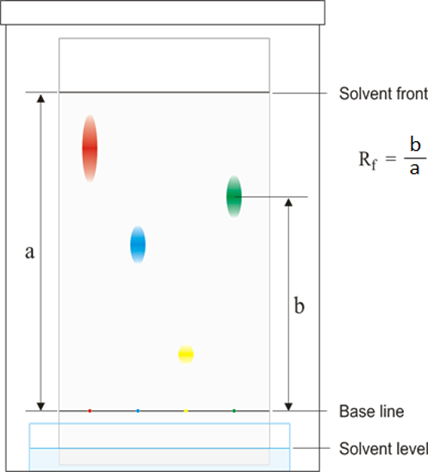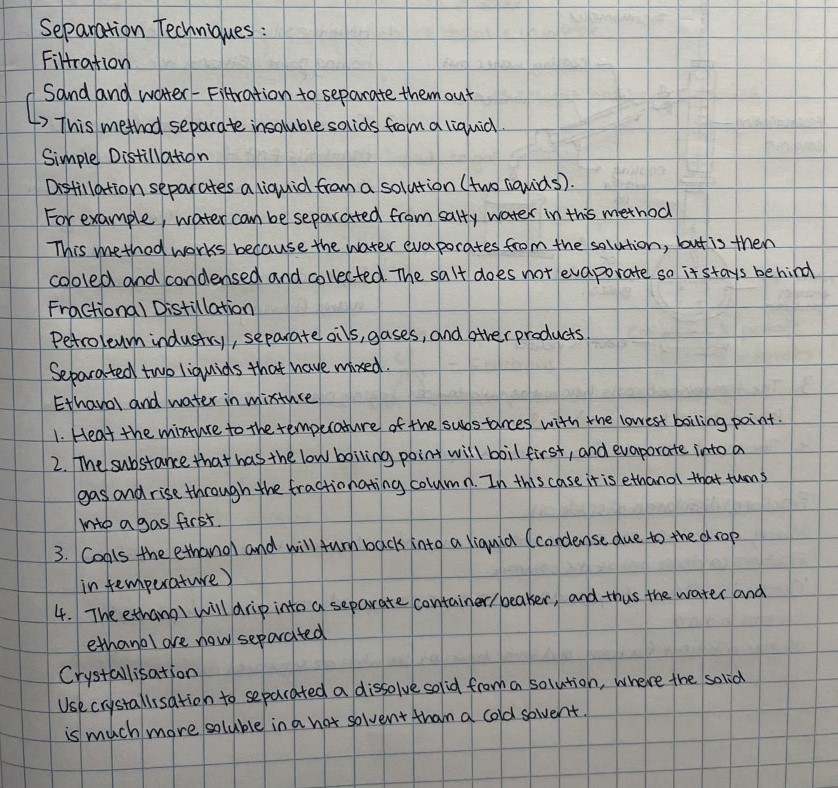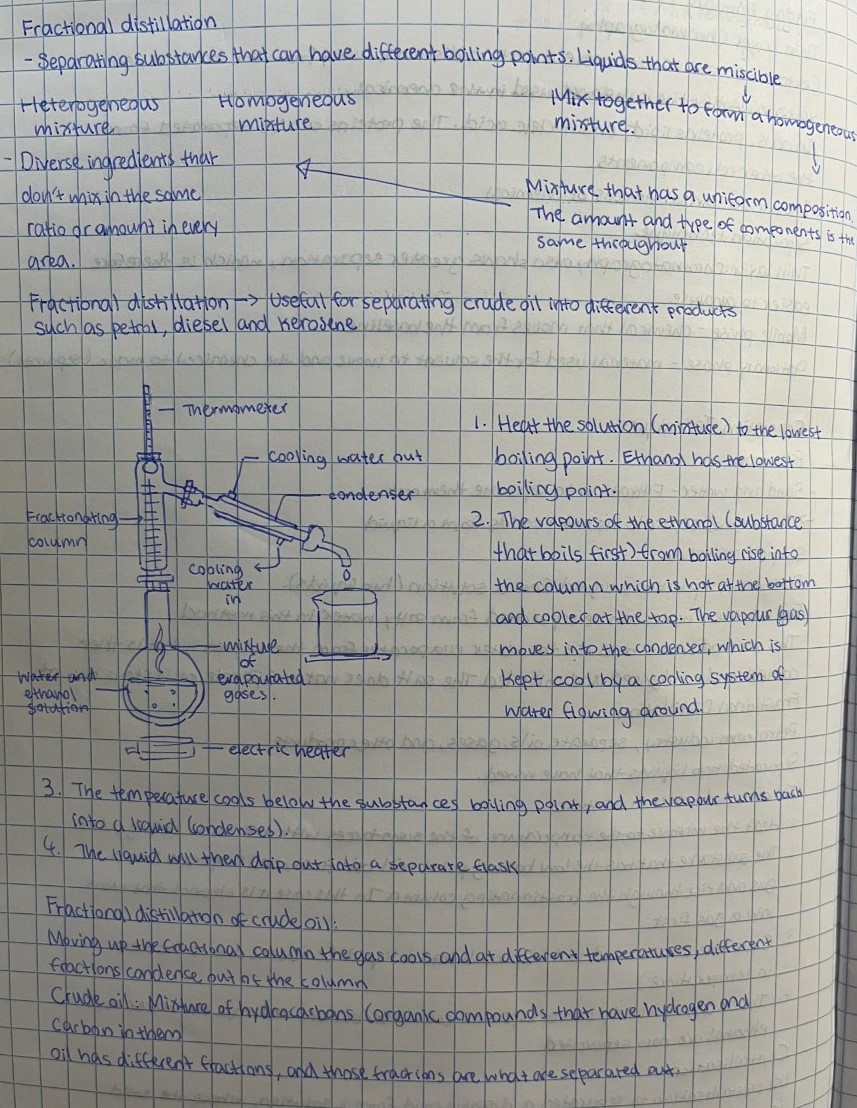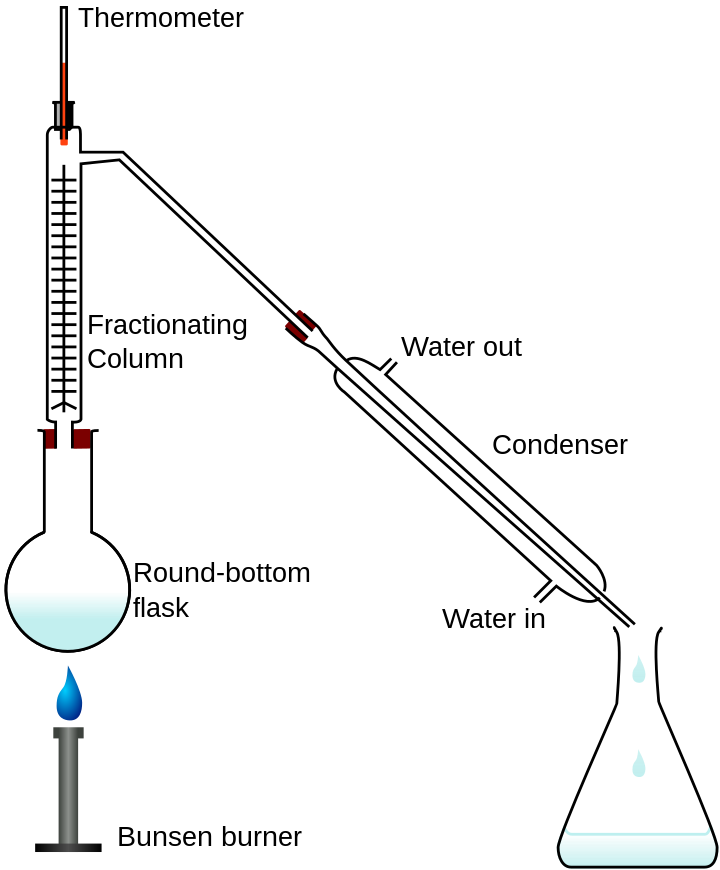
Made by Cindy and Alex!
This was made for an iGCSE school chemistry project
Our website is best viewed from a web browser! Kaitiakitanga project is at the bottom!
Chromatography
Certain substances will move a certain distance away from the baseline, so you can identify the substance used in the chemical.
In cells, proteins lipids and nucleic acid. The proteins can be separated from the other cell components.
To isolate certain substances or chemicals.
Thin layer chromatography also shows greater separation, which therefore is easier to analyze.
Mobile phase- chemical that moves from the baseline
Stationary phase- material used for the solvent to move and the chemical to move (separate)
Pure substances show up as one dot on chromatograms and impure substances show up as a longer line and have a distinct melting and boiling point
The Rf value is the ratio of the solute's distance travelled to the solvent's front.



fractional distillation diagram

kaitiakitanga
1. Air filtration systems: Air filtration systems separate pollutants and other harmful particles from the air. These systems are used in various industries to reduce the emission of harmful substances into the atmosphere.
2. Desalination technology: Desalination separates salt and other minerals from seawater to make clean drinking water. This technology is essential in areas where fresh water is scarce and helps to reduce the stress on natural water resources.
3. Reverse osmosis: Reverse osmosis is a technology used to separate dissolved solids from water. It is used to purify water for industrial and domestic use.
4. Electrostatic precipitation: Electrostatic precipitation is a technology used to separate particles and other harmful substances from the air. This technology is commonly used in power plants, steel mills, and other industries that emit large amounts of pollutants into the atmosphere and reduce the emissions.
5. Ultraviolet disinfection: Ultraviolet disinfection is a technology that separates harmful microorganisms from water. This technology is commonly used in water treatment plants and facilities that require clean water.
Electrostatic precipitation is a technique used to remove particulate matter from industrial exhaust gases. It involves the use of electrostatic charges to attract and collect particles on charged plates or surfaces. This process has made a significant impact on our environment by reducing air pollution caused by industrial activities. By removing harmful particles from exhaust gases before they are released into the atmosphere, electrostatic precipitation helps to reduce the amount of particulate matter in the air. Particulate matter in the air can seriously harm human health. By reducing the amount of particulate matter in the air, electrostatic precipitation can help to improve air quality and protect human health. Furthermore, electrostatic precipitation can also help to reduce environmental damage caused by particulate matter. For example, particulate matter can contribute to acid rain, which can harm forests, lakes, and wildlife. By reducing the amount of particulate matter in the air, electrostatic precipitation can help to mitigate the environmental damage caused by acid rain.
- ail chemistry
- bbc bitesize
- studymind
- save my exams
- physics + math tutor
- britannica (ESP)
- science direct
- britannica (chromatography)
Solvent: a substance that dissolves a solute
Solute: a substance dissolved in another substance
Solution: what is formed when a solute is dissolved in a solvent
Saturated Solution: a solution in which no more solvent can be dissolved at a given temperature
Filtrate:a substance that has passed through a filter
Residue: the material remaining after a process of seperating substances